How to Plant a Peach Tree: From Seed to Tree
- February 6, 2024
- 0 comment
Discover how to plant a peach tree, from seed to mature tree. Follow our detailed guide to grow and enjoy your own delicious peaches. Growing a peach tree from seed to tree is a rewarding journey that offers not just delicious fruits but also the satisfaction of having nurtured life from its very inception. This guide is designed to walk you through the entire process, providing you with the knowledge and tools to successfully cultivate your peach trees.
List of Complete Guide to Planting Peach Trees
- Step 1. Preparation Stage
- Step 2. Stratification Process
- Step 3. Prepare the Planting Site
- Step 4. Plant the Seed
- Step 5: Water Regularly
- Step 6: Care for the Seedling
- Step 7: Transplanting (If Started in a Pot)
- Step 8: Ongoing Care
Understanding Peach Trees
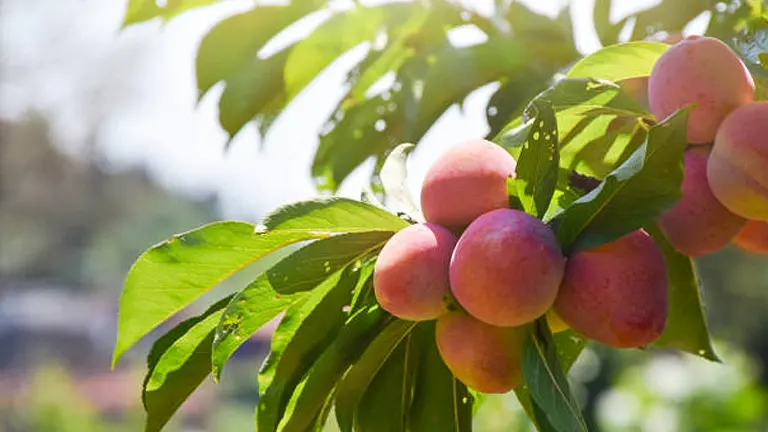
Peach trees, belonging to the genus Prunus, are valued not only for their delicious fruits but also for their ornamental beauty. They thrive in temperate regions and require specific climatic conditions to flourish, including a chilling period to break dormancy and warm summers for fruit maturation.
Varieties: Peach trees are categorized mainly into two types based on the fruit’s flesh attachment to the pit freestone and clingstone and into subcategories based on the fruit’s color, ripening time, and climate adaptability. Selecting the right variety is crucial, as it determines the care, the climate it thrives in, and the quality of the fruit.
Climate and Soil Requirements: Ideal growing conditions include well-drained, loamy soil with a pH of 6.0 to 7.0 and a location that receives full sunlight for at least six hours daily. Peach trees require a cold period (chill hours) of 600-900 hours below 45°F (7°C) to produce fruit.
Guide to Planting Peach Trees
Step 1. Preparation Stage
For the preparation stage, choose a fully ripe peach from a tree acclimated to your local climate, as this increases the chances of successful germination and growth. Keep in mind that peaches grown from seeds might not mirror the parent tree’s exact characteristics because of genetic diversity. This variability means your new tree could produce fruit that’s slightly different in taste or appearance from the original.
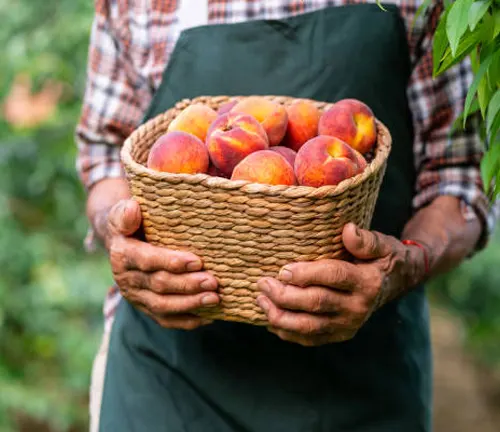
Tips:
- When selecting a peach for its seed, opt for the healthiest and most delicious fruit available, as this gives you a starting point of quality for your planting endeavor.
- Clean the seed thoroughly after removal from the fruit to prevent mold or disease from affecting germination.
- Store the cleaned seed in a cool, dry place until you’re ready to begin the stratification process, preparing it for planting.
Step 2. Stratification Process
To ensure peach seeds germinate, they must undergo stratification, a process that mimics the natural cold period they would experience outdoors, helping them break dormancy. This involves first cleaning the seed to remove any fruit residue, then wrapping it in a moist paper towel or moss to keep it from drying out. Next, place the wrapped seed in a plastic bag and store it in the refrigerator, maintaining a temperature of 34-40°F (1-4°C) for 2-3 months. This cold treatment is crucial for stimulating the seed’s awakening from dormancy and preparing it for successful planting and growth.
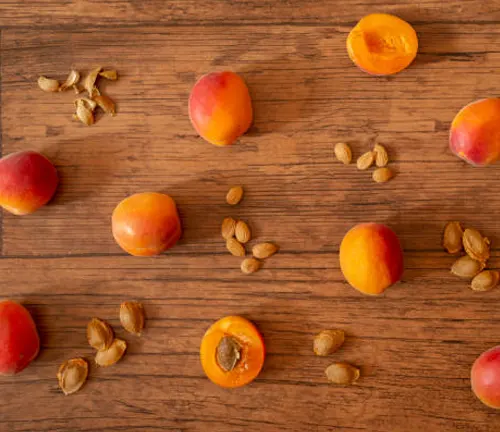
Tips:
- Check the moisture level of the paper towel or moss periodically throughout the stratification period to ensure it remains moist but not waterlogged, adjusting as necessary.
- Label the plastic bag with the date you start stratification to keep track of the process and ensure you don’t exceed the recommended time.
- Avoid storing the seeds near fruits that produce ethylene gas, like apples, as this can inhibit germination.
Step 3. Prepare the Planting Site
During the stratification period, identify a location in your garden that receives ample sunlight, as peach trees thrive with a minimum of six hours of direct sun each day. The soil condition is paramount; it should be well-draining to prevent water from pooling around the roots, which can lead to disease. The ideal soil pH for peach trees ranges from slightly acidic to neutral (6.0-7.0). Enhancing the soil with organic compost not only improves its fertility but also its structure, ensuring your peach seed has the best foundation for growth.
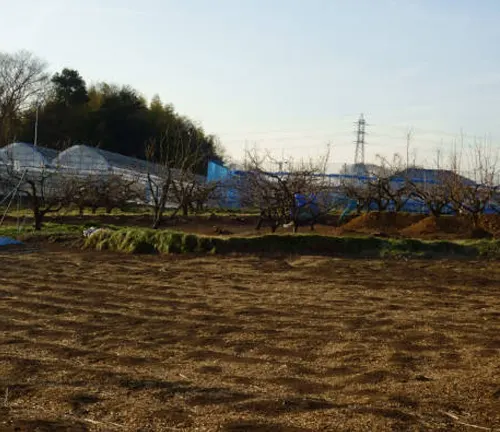
Tips:
- Conduct a drainage test by digging a hole, filling it with water, and observing how quickly it empties. If drainage is slow, consider mixing in some sand or organic matter to improve soil structure or plan to plant on a raised bed to ensure water does not accumulate around the tree’s roots.
- Evaluate your garden for microclimates that offer protection against wind and late frosts, which can benefit the delicate early stages of your peach tree’s life. Such spots can make a significant difference in the survival and growth rate of young trees.
- For precise soil amendments, a soil test can be invaluable. This test will reveal the specific pH and nutrient makeup of your soil, allowing you to adjust conditions exactly to your peach tree’s requirements.
- Apply a layer of organic mulch around the planting site after setting your peach seed in the ground. Keep the mulch a few inches away from the stem to prevent moisture buildup directly against the tree, which can cause stem rot. Mulch helps maintain soil moisture, controls weeds, and adds organic matter to the soil as it decomposes.
- Incorporating companion plants around your peach tree can enhance its growth environment by attracting beneficial insects that control pests and pollinate blossoms. Plants like marigolds deter pests with their scent, while herbs like basil can improve the overall health and vigor of your garden ecosystem, creating a more resilient and productive planting area for your peach tree.
Step 4. Plant the Seed
After completing the stratification period, the next crucial step is to plant your peach seed. This should ideally be done in early spring when the risk of frost has passed but the cool, moist spring weather can provide an ideal environment for germination. Select a day that is overcast to shield the newly planted seed from the stress of direct sunlight. Carefully dig a hole approximately 3-4 inches deep, which is deep enough to protect the seed while allowing it to break through the soil surface as it germinates.

Gently place the seed at the bottom of the hole and cover it with soil, patting down lightly to ensure contact while still allowing the soil to remain loose enough for the emerging roots to penetrate. Water the area thoroughly right after planting to moisten the soil around the seed, which is essential for initiating the germination process. This initial watering should be deep enough to saturate the surrounding soil, encouraging the root system to grow downward in search of moisture, which promotes a stronger, more resilient tree.
Tips:
- Ensure the planting site is free of weeds and debris to minimize competition for nutrients and water. This clean environment helps the seedling focus its energy on growth rather than stress.
- Consider marking the spot where you’ve planted the seed with a stake or a label. This can prevent accidental disturbances and helps you keep track of watering and observation as the seed begins to sprout.
- Keep the soil consistently moist but not waterlogged in the weeks following planting. Using a spray bottle for watering can prevent disturbing the soil or the seed with too strong a water flow.
- Be patient, as germination can take several weeks. Monitor the site regularly for signs of growth, and adjust your care as needed, such as increasing shade or water if the conditions require.
- Once the seedling emerges, consider adding a thin layer of mulch around it to conserve moisture and regulate soil temperature, being careful to leave some space around the base of the seedling to prevent moisture buildup against the stem.
Step 5: Water Regularly
Watering your peach seed and seedling correctly is key. Keep the soil damp but not soaked to help the seed germinate and the seedling grow. Water more often during dry periods to make sure the soil doesn’t dry out. It’s best to water in the morning to let the plant use the water during the day and to help stop water from evaporating too fast. Use a gentle spray to avoid disturbing the soil or hurting the young plant.
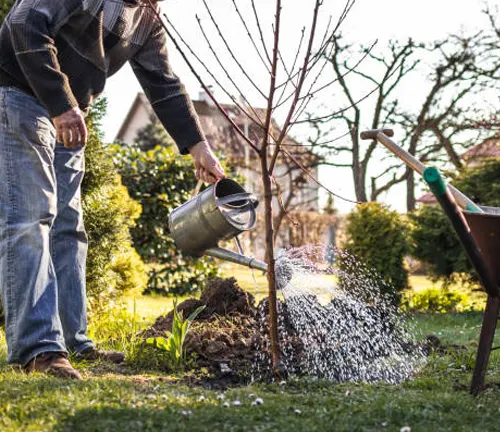
Tips:
- Mulching around the plant keeps moisture in the soil but don’t let it touch the stem to avoid rot.
- Feel the soil before watering. If the top inch is dry, it’s time to water.
- A moisture meter can tell you exactly when your plant needs water, taking the guesswork out of the process.
Step 6: Care for the Seedling
For your peach seedling to thrive, it needs plenty of sunlight, so place it in a spot where it will receive ample light throughout the day. Guard it against harsh conditions like strong winds or extreme temperatures by using protective barriers if necessary. Also, be vigilant about pests that could harm the young plant. Introduce a balanced fertilizer to encourage strong growth, but do so with a light hand to avoid overwhelming the seedling.
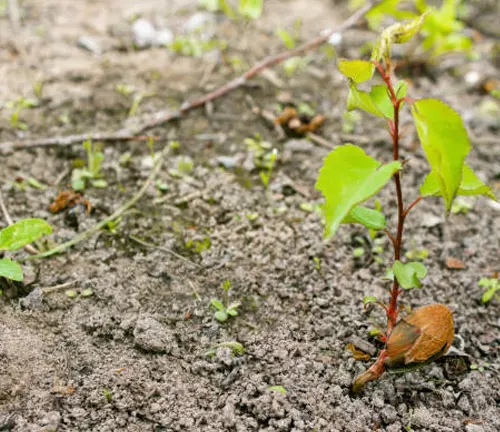
Tips:
- To monitor and control pests effectively, inspect the seedling regularly for any signs of damage or infestation, and use organic pest control methods when possible to keep the seedling safe.
- If your area experiences intense midday sun, consider shading the seedling during the hottest parts of the day to prevent scorching.
- When applying fertilizer, follow the manufacturer’s instructions for dilution and application frequency, focusing on formulations that promote root development and early growth.
Step 7: Transplanting (If Started in a Pot)
When your peach sapling has grown strong in its pot and the risk of frost is no longer a concern, it’s time to move it to a permanent location in your garden. Choose a spot that matches the conditions of its initial growing environment, ensuring it gets plenty of sunlight and is planted in well-draining soil with a similar pH level. This consistency helps the sapling adjust more easily to its new surroundings.

Tips:
- Before transplanting, water the sapling well to minimize transplant shock and make it easier to remove from the pot.
- Dig a hole in the garden that’s twice as wide as the pot to give the roots plenty of room to expand, but no deeper than the sapling’s current depth in the pot to avoid burying the stem too low.
- After placing the sapling in the hole, fill it in with soil and water thoroughly to settle the roots and eliminate air pockets, ensuring a smooth transition to its new home.

Step 8: Ongoing Care
Ensuring your peach tree’s health as it grows involves regular watering, appropriate fertilization, and timely pruning. It’s crucial to maintain a balance in these activities to support the tree’s development without stressing it. Keep an eye out for any signs of pests or diseases, addressing them quickly to prevent spread. With consistent care, your tree will strengthen and, in time, reward you with fruit.
Tips:
- Adjust watering based on the season and the tree’s age; mature trees require less frequent but deeper watering to encourage root growth.
- Use a fertilizer formulated for fruit trees, applying it in early spring and possibly again in early summer, following package directions to avoid over-fertilization.
- Prune in late winter while the tree is dormant, removing dead or overcrowded branches to improve air circulation and light penetration, which are essential for healthy growth and fruit production.
- Regularly check the tree for signs of pests or disease, using environmentally friendly treatments whenever possible to keep the tree and its surroundings safe.
Care and Maintenance
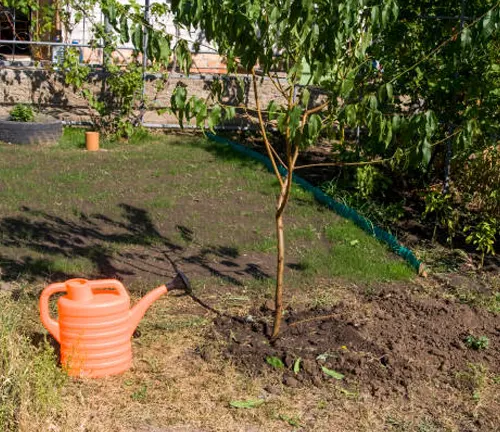
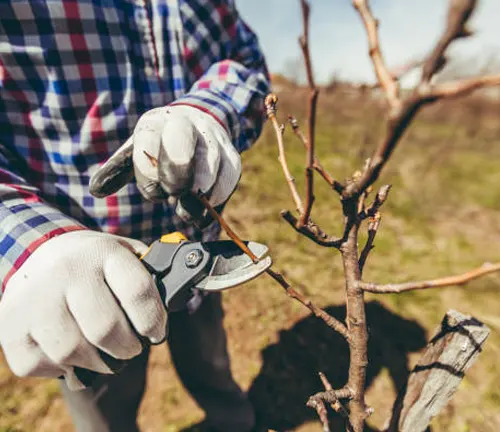
- Watering: Young peach trees require consistent moisture to establish their root systems. Water newly planted seeds or saplings deeply once a week, allowing the soil to dry out slightly between waterings. Avoid overwatering, as this can lead to root rot. As trees mature, they may require less frequent but still deep watering, especially during dry periods.
- Fertilizing: Start fertilizing your peach tree in the spring of the year following planting. Use a balanced 10-10-10 NPK (nitrogen, phosphorus, potassium) fertilizer, spreading it evenly around the base of the tree, well away from the trunk to prevent burn. Fertilize early in the spring and again in late spring or early summer to support growth and fruit production. Avoid late-summer fertilization, which can stimulate new growth susceptible to winter damage.
- Pruning: Pruning is essential for developing a strong tree structure, improving air circulation, and encouraging healthy fruit production. Begin pruning in the second year, removing dead or diseased branches and thinning out the center to allow sunlight to penetrate and air to circulate. Prune in late winter while the tree is dormant, focusing on maintaining an open, vase-like shape.
Pest and Disease Management
Peach trees can be susceptible to various pests and diseases, which can affect their health and productivity.
Common Pests:
- Peachtree Borers: These larvae burrow into the tree at soil level, causing gumming and sawdust-like frass. Use pheromone traps for adults and apply nematodes or beneficial fungi to target larvae.
- Aphids: Small insects that feed on sap, leading to curled and distorted leaves. Control them with strong water sprays, insecticidal soaps, or neem oil.
Diseases:
- Peach Leaf Curl: Causes leaves to curl and distort, turning red. Prevent by applying copper-based fungicides after leaf drop in fall and before bud break in early spring.
- Brown Rot: A fungal disease affecting fruits, causing them to rot. Improve air circulation through pruning and remove any affected fruits promptly.
Harvesting and Post-Care
- Harvesting: Peach fruits are ready to harvest when they come off the branch with a slight twist and have a full, fragrant aroma. The skin should be fully colored, and the flesh should give slightly under gentle pressure. Harvesting typically occurs in late summer, though timing can vary based on the variety and local climate.
- Post-Harvest Care: After harvesting, reduce watering to prepare the tree for dormancy. Clean up any fallen fruits or leaves to prevent the spread of pests and diseases. Apply a layer of mulch around the base to protect the roots in winter, keeping it away from the trunk to prevent rot.
- Winter Preparation: In regions with cold winters, protect young trees from frost damage by wrapping the trunk with tree wrap or using a white latex paint diluted with water to reflect sunlight and prevent sunscald.
Conclusion
Planting a peach tree from seed is a rewarding journey that offers more than just fruit; it teaches patience and provides a deep connection to the natural world. This guide has outlined the key steps, from seed selection and stratification to planting and ongoing care, highlighting the importance of each phase in nurturing your tree to maturity. While it demands attention and patience, the process of growing a peach tree from seed to fruit-bearing maturity is an enriching experience that rewards gardeners with both the satisfaction of cultivation and the delight of harvests to come.
FAQs
- Can I plant a peach seed from a store-bought peach?
Yes, you can plant a peach seed from a store-bought peach, but keep in mind that these peaches are often from hybrid varieties. This means the tree that grows from the seed may not produce fruit identical to the original peach. Also, store-bought peaches might have been treated to inhibit sprouting, so it’s best to use seeds from organic peaches for higher germination rates. - How long does it take for a peach tree to bear fruit when grown from a seed?
Peach trees grown from seed can take anywhere from 3 to 5 years to bear fruit, depending on the growing conditions and the care provided. In some cases, it might take longer for the tree to mature fully and start producing fruit. - Do peach trees need a lot of sunlight?
Yes, peach trees require full sunlight to thrive and produce fruit. They should receive at least six hours of direct sunlight each day. A sunny and well-ventilated location helps in promoting healthy growth and maximizing fruit production. - How often should I water my peach tree?
Young peach trees need to be watered regularly to establish their root systems, typically once a week if there is no significant rainfall, ensuring the soil is moist but not waterlogged. Mature trees require less frequent watering. The exact frequency depends on the soil type and weather conditions. - Do I need to fertilize my peach tree?
Yes, fertilizing your peach tree is essential for its growth and fruit production. A balanced fertilizer should be applied in early spring before new growth begins. Additional light applications can be made during the growing season to support fruit development, but avoid late summer or fall fertilization, which could stimulate new growth susceptible to frost damage. - When and how should I prune a peach tree?
Prune your peach tree during the dormant season, late winter or early spring before new growth starts. Focus on removing dead or diseased branches, thinning out crowded areas to improve air circulation and light exposure, and shaping the tree to support fruit production. Pruning helps in maintaining the tree’s health and enhancing fruit quality. - How can I protect my peach tree from pests and diseases?
Regular monitoring and adopting preventive measures, such as keeping the area around the tree clean and applying organic pest control methods, can help protect your peach tree from pests and diseases. If you notice any signs of infestation or illness, treat promptly with appropriate organic or chemical treatments. - What should I do if my peach tree isn’t producing fruit?
Several factors can contribute to a peach tree not bearing fruit, including inadequate sunlight, insufficient pollination, over-pruning, or nutrient deficiencies. Ensure your tree is getting enough sunlight, consider planting another peach variety nearby for cross-pollination, avoid over-pruning, and test your soil to see if it lacks any nutrients critical for fruit production.
Growing a peach tree from seed to tree is straightforward with the right steps. This guide covered everything from seed selection to care and maintenance. With patience and a little effort, you’ll enjoy the satisfaction of nurturing a seed into a fruit-bearing peach tree. Happy planting!

Benjamin Brooks
Forestry AuthorGreetings! I'm Benjamin Brooks, and my journey over the past 15 years has revolved around the fascinating realms of content creation, expertise in snow clearing, and the intricate world of lumberjacking and landscaping. What began as a simple curiosity about the natural world and heavy machinery has evolved into a passionate profession where my love for crafting words intertwines seamlessly with my lumberjacking and garden skills.

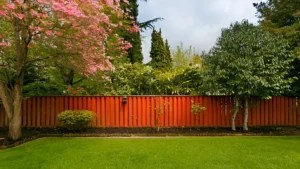
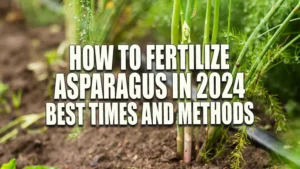

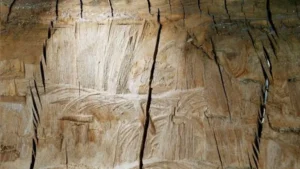




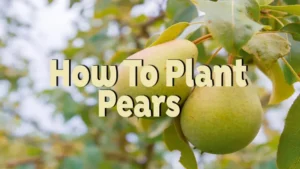


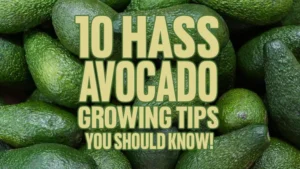
Leave your comment